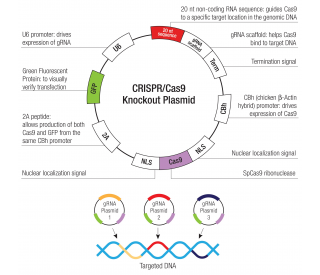Purity
>95%, by SDS-PAGE visualized with Silver Staining and quantitative densitometry by Coomassie® Blue Staining.
Endotoxin Level
<0.10 EU per 1 μg of the protein by the LAL method.
Activity
Measured in a cell proliferation assay using HUVEC human umbilical vein endothelial cells. Conn, G. et al. (1990) Proc. Natl. Acad. Sci. USA 87:1323. The ED 50 for this effect is 0.75‑3.75 ng/mL.
Source
Mouse myeloma cell line, NS0-derived Ala27-Arg190
Accession #
N-terminal Sequence
AnalysisAla27
Structure / Form
Disulfide-linked homodimer
Predicted Molecular Mass
19.2 kDa (monomer)
SDS-PAGE
25 kDa, reducing conditions
Carrier Free
What does CF mean?
CF stands for Carrier Free (CF). We typically add Bovine Serum Albumin (BSA) as a carrier protein to our recombinant proteins. Adding a carrier protein enhances protein stability, increases shelf-life, and allows the recombinant protein to be stored at a more dilute concentration. The carrier free version does not contain BSA.
What formulation is right for me?
In general, we advise purchasing the recombinant protein with BSA for use in cell or tissue culture, or as an ELISA standard. In contrast, the carrier free protein is recommended for applications, in which the presence of BSA could interfere.
564-RV |
| 564-RV/CF |
Formulation Lyophilized from a 0.2 μm filtered solution in PBS with BSA as a carrier protein. | Formulation Lyophilized from a 0.2 μm filtered solution in PBS. | |
Reconstitution Reconstitute at 100 μg/mL in sterile PBS containing at least 0.1% human or bovine serum albumin. | Reconstitution Reconstitute at 100 μg/mL in sterile PBS. | |
Shipping The product is shipped at ambient temperature. Upon receipt, store it immediately at the temperature recommended below. | Shipping The product is shipped at ambient temperature. Upon receipt, store it immediately at the temperature recommended below. | |
Stability & Storage: Use a manual defrost freezer and avoid repeated freeze-thaw cycles.
| Stability & Storage: Use a manual defrost freezer and avoid repeated freeze-thaw cycles.
|
Data Images
Bioactivity
| Recombinant Rat VEGF164 (Catalog # 564‑RV) stimulates cell proliferation in HUVEC human umbilical vein endothelial cells in a dose-dependent manner. The ED50 is 0.75-3.75 ng/mL. |
SDS-PAGE
| 1 μg/lane of Recombinant Rat VEGF164 was resolved with SDS-PAGE under reducing (R) and non-reducing (NR) conditions and visualized by silver staining, showing bands at 25 kDa and 54 kDa, respectively. |
Background: VEGF
Vascular endothelial growth factor (VEGF or VEGF-A), also known as vascular permeability factor (VPF), is a potent mediator of both angiogenesis and vasculogenesis in the fetus and adult (1-3). It is a member of the PDGF family that is characterized by a cysteine-knot structure formed by eight conserved cysteine residues (4). Alternately spliced isoforms of 121, 145, 165, 183, 189, and 206 amino acids (aa) have been identified in humans, with 120, 164 and 188 aa isoforms found in rat and mouse (2, 4). Isoforms other than VEGF120 and VEGF121 contain basic heparin-binding regions and are not freely diffusible (4). Rat VEGF164 shares 97% aa sequence identity with corresponding regions of mouse, 88% with human and bovine, 89% with porcine and canine, and 90% with feline and equine VEGF, respectively. VEGF binds the type I transmembrane receptor tyrosine kinases VEGF R1 (also called Flt-1) and VEGF R2 (Flk-1/KDR) on endothelial cells (4). Although affinity is highest for binding to VEGF R1, VEGF R2 appears to be the primary mediator of VEGF angiogenic activity (3, 4). Human VEGF165 binds the semaphorin receptor, neuropilin-1 and promotes complex formation with VEGF R2 (5). VEGF is required during embryogenesis to regulate the proliferation, migration, and survival of endothelial cells (3, 4). In adults, VEGF functions mainly in wound healing and the female reproductive cycle (3). Pathologically, it is involved in tumor angiogenesis and vascular leakage (6, 7). Circulating VEGF levels correlate with disease activity in autoimmune diseases such as rheumatoid arthritis, multiple sclerosis and systemic lupus erythematosus (8). VEGF is induced by hypoxia and cytokines such as IL-1, IL-6, IL-8, oncostatin M and TNF-alpha (3, 4, 9).
References:
Conn, G. et al. (1990) J. Biol. Chem. 87:2628.
Ishii, H. et al. (2001) Arch. Oral Biol. 46:77.
Byrne, A.M. et al. (2005) J. Cell. Mol. Med. 9:777.
Robinson, C.J. and Stringer, S.E. (2001) J. Cell. Sci. 114:853.
Pan, Q. et al. (2007) J. Biol. Chem. 282:24049.
Weis, S.M. & D.A. Cheresh (2005) Nature 437:497.
Thurston, G. (2002) J. Anat. 200:575.
Carvalho, J.F. et al. (2007) J. Clin. Immunol. 27:246.
Angelo, L.S. & R. Kurzrock (2007) Clin. Cancer Res. 13:2825.
Long Name:
Vascular Endothelial Growth Factor
Entrez Gene IDs:
7422 (Human); 22339 (Mouse); 83785 (Rat); 281572 (Bovine); 403802 (Canine); 493845 (Feline); 30682 (Zebrafish)
Alternate Names:
MVCD1; VAS; vascular endothelial growth factor A; Vascular permeability factor; Vasculotropin; VEGF; VEGFA; VEGF-A; VEGFMGC70609; VPF; VPFvascular endothelial growth factor










